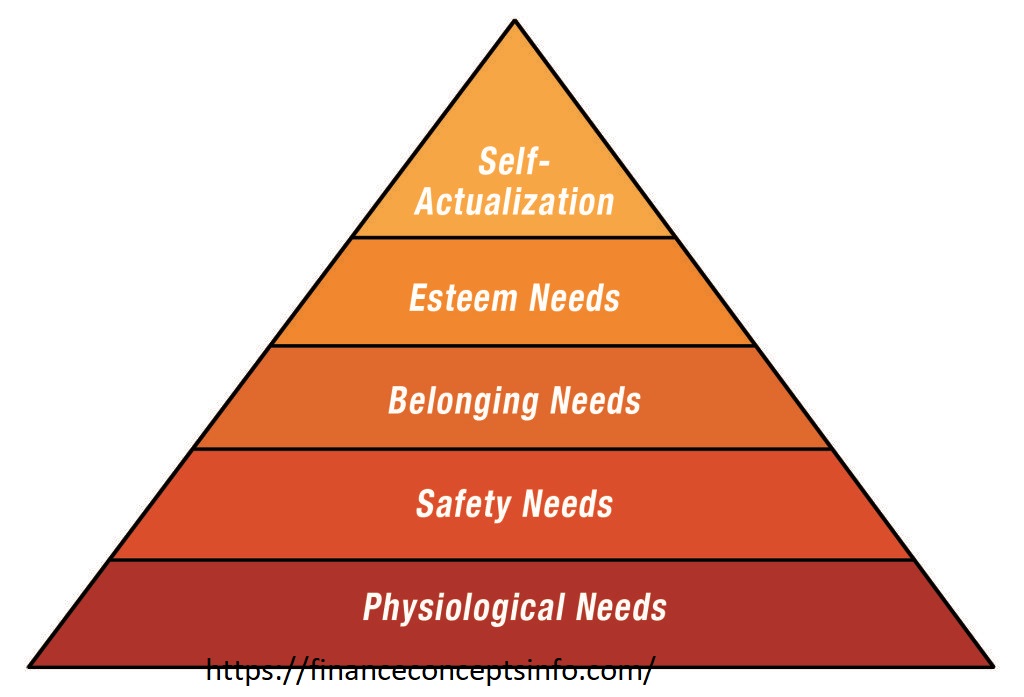Introduction:
Human needs are the essence of our existence, driving our actions and shaping our interactions with the world. In this blog post, we delve into the profound significance of understanding these needs, exploring their definition and implications.
Our purpose is twofold: to provide a comprehensive overview of human needs and to unravel the intricacies of Maslow’s Hierarchy of Needs. Whether you’re a student of psychology, a business leader, or simply curious about human nature, this post offers valuable insights into the fundamental drivers of human behavior.
Definition of Human Needs
At its core, human needs refer to the fundamental requirements essential for individual well-being and survival. These needs encompass a wide spectrum, ranging from basic physiological necessities to more complex psychological and emotional desires.
Importance for Individual Well-being
Human needs are crucial for individual well-being, providing the foundation upon which a fulfilling life can be built. Meeting these needs ensures physical health, emotional stability, and psychological fulfillment.
Exploring Different Perspectives
Various perspectives exist regarding the definition of human needs, reflecting the multifaceted nature of human existence. Some emphasize the biological imperative of meeting physiological requirements, while others underscore the importance of social connections, emotional fulfillment, and personal growth.
Variations in Definition
Key variations in defining human needs include the concept of “basic human needs” and the inquiry into “what are human needs definition.” The former pertains to fundamental necessities required for survival and basic functioning, while the latter seeks to unravel the intricacies of human needs and their implications for individual well-being and societal development.
Maslow’s Hierarchy of Human Needs Definition
Maslow’s Hierarchy of Needs theory is a cornerstone in understanding the fundamental drivers of human behavior and motivation. This groundbreaking theory, proposed by psychologist Abraham Maslow in the mid-20th century, elucidates the hierarchical nature of human needs and the sequential progression towards self-actualization.
Understanding Maslow’s Theory
At the heart of Maslow’s theory is the notion that human needs can be categorized into five distinct levels, arranged in a hierarchical pyramid. According to Maslow, individuals are motivated to fulfill these needs in a specific order, with lower-level needs taking precedence over higher-level ones.
Breaking Down the Five Levels
Physiological Needs: At the base of Maslow’s hierarchy are physiological needs, which encompass the most basic requirements for human survival, such as food, water, shelter, and sleep. These needs are fundamental for sustaining life and ensuring biological functioning.
Safety Needs: Once physiological needs are met, individuals seek safety and security from physical and emotional harm. This includes the need for a stable environment, financial security, health, and protection from danger.
Love/Belonging Needs: With safety needs fulfilled, individuals crave social connections, love, and a sense of belonging. This involves forming meaningful relationships with family, friends, and community members, as well as experiencing intimacy and acceptance.
Esteem Needs: As individuals satisfy their need for love and belonging, they strive for esteem and recognition from others. This includes the desire for respect, admiration, and a positive reputation. Additionally, individuals seek to develop a sense of self-worth and confidence.
Self-Actualization: At the pinnacle of Maslow’s hierarchy lies self-actualization, representing the fulfillment of one’s highest potential and aspirations. This involves realizing personal growth, pursuing creative endeavors, and achieving a sense of purpose and fulfillment in life.
Shaping Our Understanding
Maslow’s theory has profoundly shaped our understanding of human needs and motivation. By delineating the hierarchical progression of needs, Maslow highlights the innate drive for self-improvement and personal growth. Moreover, Maslow’s emphasis on the importance of psychological and self-fulfillment needs underscores the holistic nature of human well-being.
Key Variation: Maslow’s Hierarchy of Human Needs Definition
The key variation in understanding Maslow’s hierarchy lies in its definition, which encapsulates the sequential progression of human needs toward self-actualization. This definition serves as a framework for understanding human motivation and behavior, providing valuable insights into the factors that drive individuals to seek fulfillment and happiness.
Exploration of Basic Human Needs
As we journeyed through the exploration of basic human needs, we delved deep into the essence of what it means to be human. Our discussion illuminated the fundamental requirements that are essential for human survival and development, transcending cultural boundaries and societal norms.
Understanding Fundamental Needs
At the core of our exploration lies the recognition that certain needs are universal to all human beings, regardless of culture, background, or socioeconomic status. These fundamental needs, such as food, water, shelter, and safety, form the bedrock upon which human existence is built. Without these essentials, individuals are unable to thrive and fulfill their potential.
Cross-Cultural Perspectives
One of the most enlightening aspects of our exploration was the examination of basic human needs across cultures and societies. Despite the myriad of cultural differences that exist in the world, there is a remarkable degree of consensus regarding the fundamental needs that are essential for human well-being. Whether in the bustling streets of New York City or the remote villages of rural Africa, individuals share a common desire for sustenance, security, and belonging.
Illustrative Examples
Throughout our discussion, we encountered numerous illustrative examples that brought the concept of basic human needs to life. From the nomadic tribes of Mongolia, who prioritize access to clean water and shelter, to the urban dwellers of Tokyo, who seek safety and stability in a fast-paced world, these examples served as poignant reminders of the universal nature of human needs.
Key Variation: Basic Human Needs Definition
One key variation that emerged from our exploration was the concept of the “basic human needs definition.” This variation underscores the importance of recognizing the essential requirements that are vital for human survival and well-being. By defining basic human needs, we gain a deeper understanding of the fundamental drivers of human behavior and the factors that shape our lives.
Analysis of Human Needs
Our exploration into the question, “What are human needs?” has been a journey of discovery, as we’ve delved deep into the intricacies of human nature and the factors that drive human behavior. Through our investigation, we’ve uncovered a multitude of perspectives and theories that shed light on the complex tapestry of human needs.
Understanding the Various Aspects of Human Needs
One of the most illuminating aspects of our analysis was the recognition of the multifaceted nature of human needs. We discovered that human needs encompass a wide array of dimensions, including physical, psychological, emotional, and social aspects. From the basic physiological requirements for survival to the more nuanced desires for self-actualization and fulfillment, human needs are diverse and dynamic.
Comparing Different Theories and Perspectives
As we explored various theories and perspectives on human needs, we encountered a rich tapestry of ideas that offered unique insights into the nature of human motivation. From Maslow’s Hierarchy of Needs to Alderfer’s ERG Theory to Deci and Ryan’s Self-Determination Theory, each theory offered a distinct framework for understanding human needs. While some theories emphasized the hierarchical progression of needs, others focused on the importance of intrinsic motivation and psychological growth.
Identifying Common Themes and Patterns
Despite the diversity of theories and perspectives, we identified several common themes and patterns in defining human needs. Across different theories, there was a consistent emphasis on the importance of basic physiological requirements, such as food, water, and shelter. Additionally, there was a recognition of the significance of social connections, belongingness, and esteem in fulfilling human needs. These common themes underscored the universal nature of certain human desires and aspirations.
Conclusion
In summary, our exploration into human needs has been enlightening and thought-provoking. We began by delving into the definition of human needs, recognizing their significance for individual well-being and societal development. Through our analysis, we uncovered the multifaceted nature of human needs, spanning from basic physiological requirements to higher-level aspirations for self-actualization.
We then ventured into Maslow’s Hierarchy of Needs, breaking down the five levels and examining how they shape our understanding of human motivation. From physiological needs to self-actualization, Maslow’s theory provided valuable insights into the hierarchical progression of human needs and the factors that drive human behavior.
Next, we explored the concept of basic human needs, comparing different theories and perspectives to identify common themes and patterns. Through our analysis, we gained a deeper appreciation for the universal nature of certain human desires and aspirations, regardless of cultural or societal differences.
In conclusion, understanding human needs is essential for fostering personal growth, building strong communities, and promoting human flourishing. By recognizing and honoring these needs, we can create environments that support individual well-being and collective progress. I encourage further exploration and research into human needs and their implications, as we continue to uncover the intricacies of human nature and the factors that shape our lives. Together, let us strive to cultivate a deeper understanding of human needs and work towards creating a more compassionate and fulfilling world for all.

